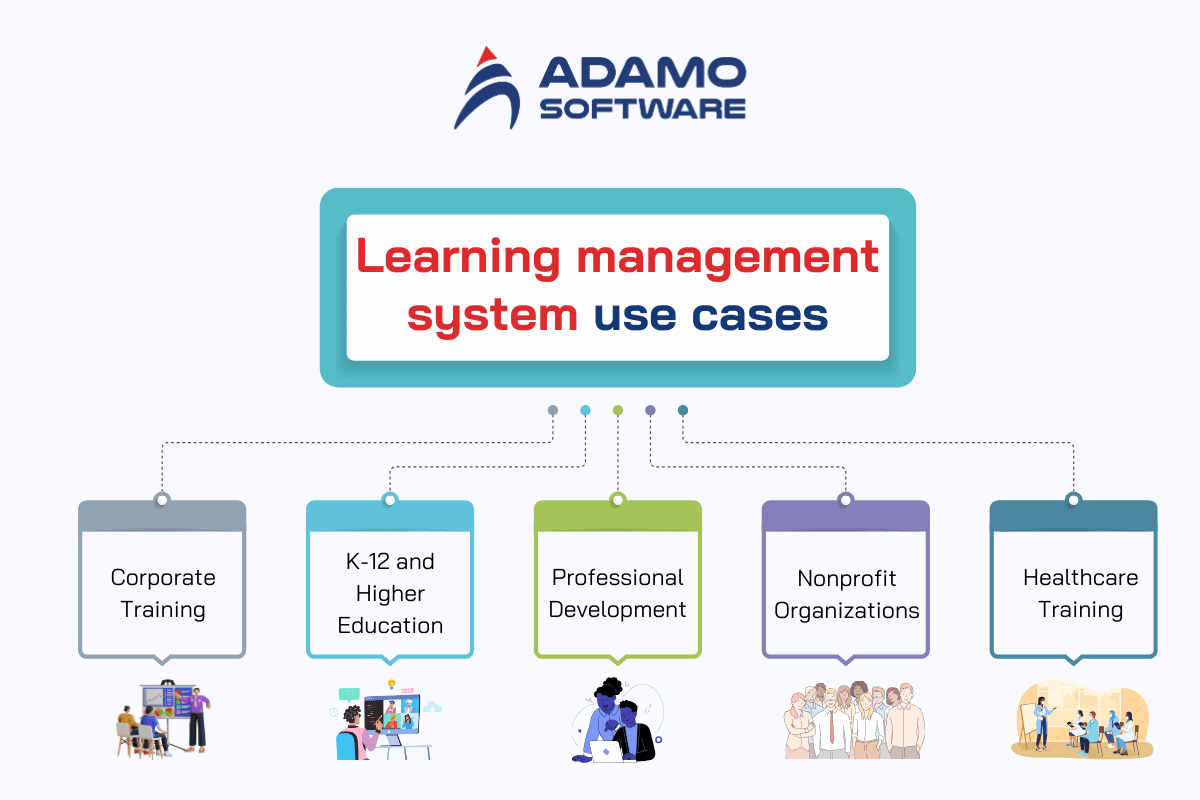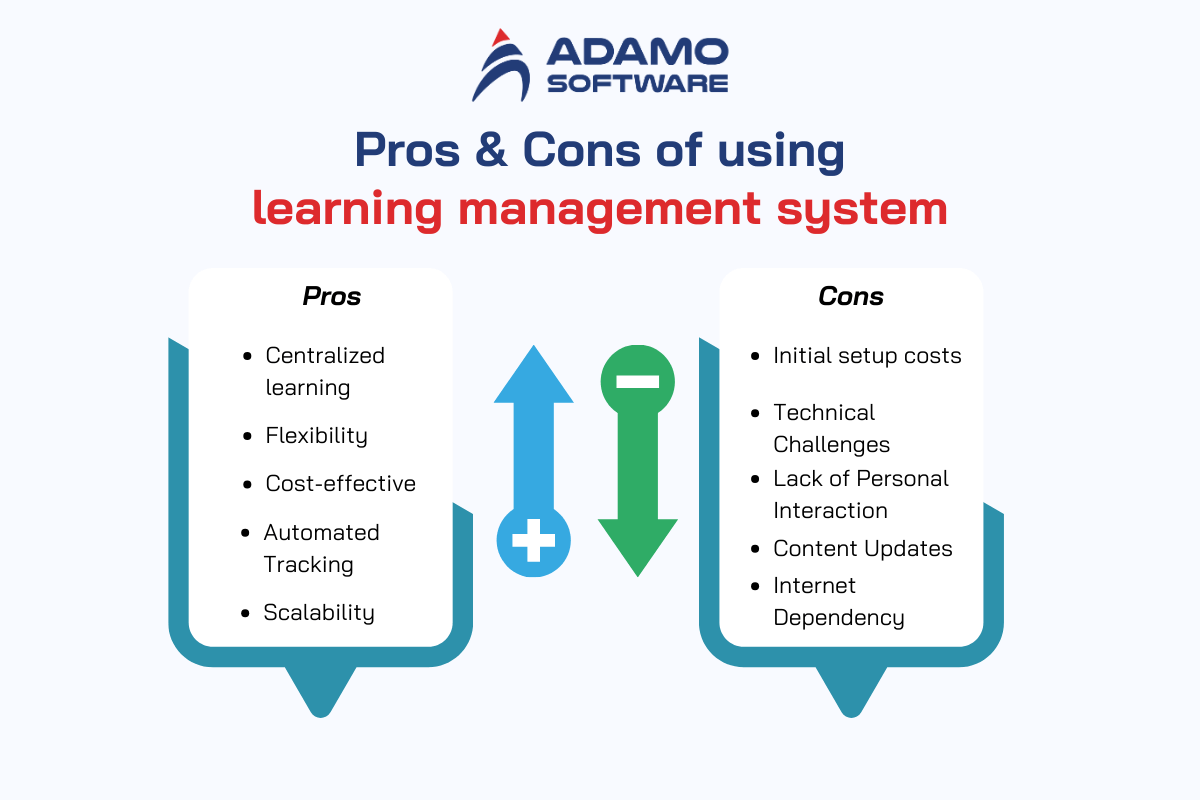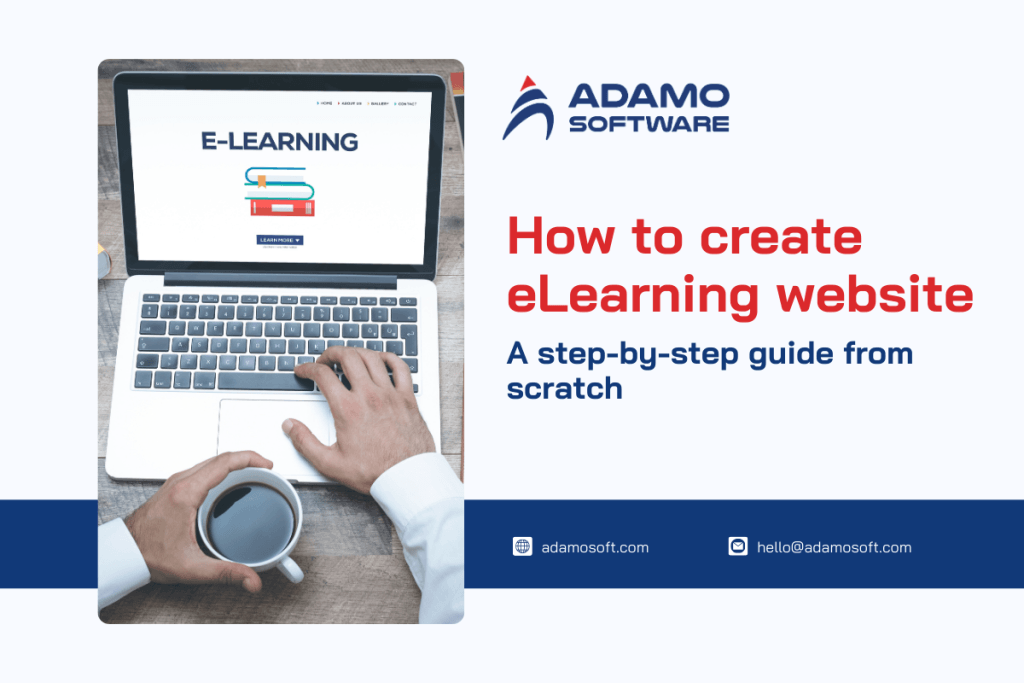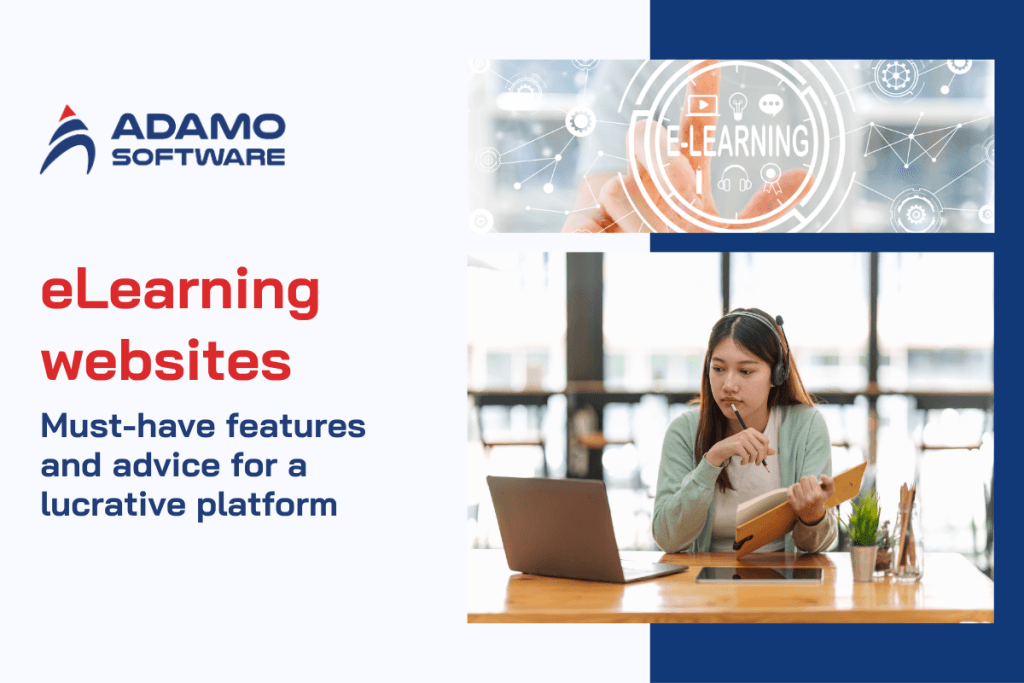15+ Best learning management system to look for in 2026 and beyond

Organizations, schools, and businesses need the best learning management system in today’s world that evolves technologically. A good LMS facilitates teaching and learning through flexibility, customization, and the total ability to monitor performance.
In 2026, the demand for advanced LMS platforms is expected to grow. More companies and organizations are focusing on skill development. They aim to boost productivity and engage learners. Personalized learning opportunities will play a key role in this shift.
It is important to select the best learning management system. This guide aims to identify the most provocative systems to look for in 2026. It also contains information on the learning management system’s advantages and disadvantages. We will also discover why a system such as Adamo can make for a premier learning platform. Emerging trends in learning, like augmented and virtual reality, are gaining attention. LMS platforms are transitioning to support innovative and immersive learning methods.
At the end, you will understand the current LMS options for 2026. You’ll learn about the features that set them apart and how to choose the best LMS for your organization.
I. Explore learning management systems use cases
The best learning management system (LMS) is essential for organizations across industries. It addresses training delivery, learner engagement, and progress monitoring. In the future, LMS advancements will continue to grow. These systems will offer solutions tailored to business needs.
Here are seven examples of how the best LMS can make a big difference:

1. Corporate Training
LMS platforms are now used in organizations for corporate training. They help employees stay competent and updated on market knowledge and commerce laws. The best learning management system allows organizations to create custom content for training, orientation, risk, compliance, leadership, and employee skills.
Key Features:
- Customizable learning paths
- Integration with HR tools
- Automated progress tracking
- Multi-device access
- Certification management
2. K-12 and Higher Education
LMS is adopted for face-to-face and online learning from basic to tertiary institutions. The top LMS supports education by helping teachers create engaging courses. It also manages assignments and tracks student performance.
Key Features:
- Course creation tools
- Virtual classrooms and forums
- Assessment and grading systems
- Reports on students’ performance and analytics on their achievements
- Mobile-friendly interface
3. Professional Development
Employees and businesspersons’ harness LMS to obtain skills enhancement courses and certification programs. These are essential features that the LMS for professional development must have and be effective. They should enable a learner to reskill at his/her own pace or even in their free time.
Key Features:
- On-demand learning content
- Certification and licensing options
- Many factors help customers be more engaged with the product.
- Online sessions such as workshops and classroom-like live sessions.
- Real-time progress updates
4. Nonprofit Organizations
Nonprofit organizations use LMS to train volunteers, run education campaigns, and extend community programs. The best LMS for nonprofits allows them to create learning modules accessible to many people, even with limited financial resources.
Key Features:
- Affordable or open-source solutions
- Multilingual content support
- Computer meditative for group working and learning
- Volunteer training management
- Social learning features
5. Healthcare Training
In healthcare, LMS platforms are used to ensure the delivery of the necessary vocational education to a doctor. The best learning management system meets current standards, protocols, and laws.
Key Features:
- Compliance tracking
- Interactive medical simulations
- Continuing education modules
- Performance assessments
In this respect, the best LMSs are developed to fit all these sectors. They assist organizations in managing training and education demands appropriately.
II. Pros and cons of using the learning management system
Enterprise Learning Management Systems (LMS) are frameworks to manage the training courses for various sections and industries. The best learning management system can improve learning experiences and effectiveness. It also brings some of the following challenges. Below are the benefits and disadvantages of LMS to assist organizations in making the right decision.

1. Pros
- Centralized Learning: The best learning management system centralizes all the learning material on one platform. Therefore, it can be easily accessed and managed by the trainers and the learners.
- Flexibility: These learning resources are a way of e-course delivery in which learners can attend any class at any time, any place.
- Cost-effective: LMS decreases paper-based material and training facilities, resulting in a reduction of total training expenditure.
- Automated Tracking: The advanced tracking and reporting feature makes the best learning management system to enable learner performance and completion rate tracking.
- Scalability: The LMS platforms are also flexible to adapt to the increasing number of organizations. They can handle many learners without requiring resources like those needed for building a large learning management system.
2. Cons
- Initial setup costs: The best learning management system is also capital-intensive, especially for the best software, which may be expensive for small organizations.
- Technical Challenges: Some users could experience problems managing it, for instance, if the interface is not friendly or if tech knowledge is required.
- Lack of Personal Interaction: Online learning can limit the amount of time learners get to interact with each other, especially on a face-to-face basis. This may demotivate some students.
- Content Updates: An update of learning content is essential to keep the system up to date for entitled learning. This demands frequent input and output in terms of resources.
- Internet Dependency: It also depends on an internet connection to a greater extent, which may not be very useful in places with poor internet connection.
The best learning management system must include the features of flexibility, cost-effectiveness, and scalability. However, such things as the setup costs and technical issues are also important. Such advantages and disadvantages assist the businesses in determining the ideal LMS necessary for the organization.
III. How to choose the suitable LMS
Selecting the right learning management system is crucial for any organization that seeks to offer training or educational programs. It is good to understand some factors when choosing an LMS as an expert to the best decision. The following step-by-step guide will help you select the best learning management system.

1. Understand Your Needs
The first step is to determine the goals for which an LMS is to be used. Are you choosing an LMS for business training, company orientation, or continuing education? Being aware of these needs assists in coming up with a precise course that can meet the individual’s adequate requirements. For instance, compliance features may be useful to businesses, whereas grading and student performance features may be useful to schools. By identifying these needs, you can guarantee the LMS you select will serve your organization’s objectives well.
2. Evaluate Features and Customization
There are diverse LMS platforms, and each one has unique features. Hence, recognizing what each system has is crucial. When choosing an LMS, consider course authoring, testing, monitoring tools, and reporting. Another important feature of the learning management system is the flexibility in customization. Many features, including customized ability, branding, and personal learning paths, are very effective. They will enhance the usage of the application.
3. Scalability and Flexibility
Consequently, you’re training or educational needs as an organization will increase as the organization expands. Another factor to consider is the flexibility of an LMS in terms of accommodating the growth of the organization. The best learning management system can accommodate more learners, extra courses, and enhanced resources without compromising performance. This is particularly important for organizations that expect growth and expansion of their operation or services. The LMS is designed in such a way that it does not fall out of usefulness after a few years and does not need overhaul constantly.
4. User-Friendly Interface
Convenience is among the key considerations when selecting the best learning management system. From the side, learners and administrators should be able to work within the platform with ease. If interfaces are too intricate and difficult to navigate, users will avoid interacting and seldom learn. Choose an easy-to-navigate LMS wherein the interfaces are menu-driven, and the systems are easy to maneuver. A system that is easy to navigate fosters user contentment and requires minimal use of the platform.
5. Integration and Technical Support
Ideally, the LMS must be compatible with other platforms, including HR management systems, communication mediums, or analytical tools. The ideal LMS must be compatible with third-party tools, thus simplifying the improvement of various organizational tools. In the same way, concerning the support provided, the reception must be stable and trustworthy to provide their customers with adequate support. You need reliable technical support from your LMS provider, notably if you are in the implementation phase, where you need frequent resolution of various technicalities.
6. Cost and Return on Investment (ROI)
Last but not least is cost sensitivity, an important factor. The best learning management system must be affordable, utility, and a solution to the price for the features. Estimate the overall cost of the system, including the initial installation from the vendors, renewal fees, and annual maintenance costs. The rationale behind a free or low-cost LMS is rather questionable. It would also be pertinent to consider what they have to offer. A better LMS can be more costly, but it can also produce far superior results, engage learners more, and increase productivity. Therefore, the overall ROI is greater. Be concerned as to whether an LMS you are choosing meets your budget line without compromising on the ultimate returns.
To choose the best learning management system, consider your organization’s requirements, the features provided, flexibility and ease, compatibility, and cost. Spend time on the assessment of these aspects and thus be sure that your LMS will cover the present and future needs of your organization. For the best learning management system, there is a lasting value when learning is enhanced, and better results are achieved.
IV. Best learning management system examples in 2024
The selection of the best LMS is very important to any organization or institution with the vision of providing quality training and education. The best learning management system is equipped with different features to suit different requirements. These features may include corporate training, academic, and professional development learning. Here are more than 15 of the best learning management systems to search for in 2024:
1. Moodle
Moodle is one of those well-known open-source solutions for LMS, designed for educational institutions and organizations. They are adaptive. They come with available solutions to fit any problem. Moreover, their solutions are easily supported by an active community.
Key Features:
- Open-source and free-to-use
- Customizable interface
- Mobile-friendly
- Strong community support
Pros:
- Free and open source
- Highly customizable
- Large community for support
Cons:
- It is normally a technical process to set the utility up
- Limited out-of-the-box functionality
2. Canvas
Canvas is popularly adopted in schools and universities, many of which adopt it to enhance communication between teachers and their students. It entails an easy-to-use environment. Canvas also provides users with powerful support systems.

Key Features:
- Cloud-based platform
- Integration with third-party tools
- Mobile application to access it at any one place
- Real-time collaboration tools
Pros:
- Easy to use
- Strong integration capabilities
- Accessible from mobile devices
Cons:
- Limited customization options
- Slightly expensive for extra options
3. Blackboard Learn
Blackboard Learn is a popular LMS that stands out through powerful and versatile functionalities. This is the best learning management system that will suit the needs of higher education.
Key Features:
- Course management tools
- Grade center for assessments
- Virtual classrooms
- Mobile app
Pros:
- Strong analytics and reporting
- Comprehensive assessment tools
- Scalable for large institutions
Cons:
- Expensive for smaller organizations
- Complex setup process
4. TalentLMS
Talent LMS is an LMS for corporate training positioned as an easy-to-use cloud solution with features customizable to the buyer’s needs.
Key Features:
- Gamification tools
- Custom branding options
- Supports multiple languages
- Built-in reporting and analytics
Pros:
- Simple setup
- Engaging features like gamification
- Including several types of industries
Cons:
- Limited for academic institutions
- Some features are only offered for users with a paid subscription.
5. Docebo
Docebo is a cloud LMS that targets the business sector to improve learners’ adventures with advanced learning solutions through artificial intelligence.
Key Features:
- AI-powered learning
- Blended learning capabilities
- SCORM and xAPI compliance
- Customizable learning paths
Pros:
- Advanced AI features
- Scalable for large organizations
- Offers extensive customization
Cons:
- Expensive for small businesses
- The steep learning curve, especially for first-time users.
6. SAP Litmos
SAP Litmos is an LMS solution specific for corporate training, and the platform makes the learning process as simple as possible yet effective.

Key Features:
- Extensive content library
- Gamification and quizzes
- Mobile learning support
- Integration with HR systems
Pros:
- Fast implementation
- This applies to numerous sectors.
- Great for compliance training
Cons:
- Limited customization
- Premium features attract more subscribers, resulting in high costs.
7. Absorb LMS
Absorb LMS features a modern interface, and it primarily targets corporate learners. It has a rather simplistic interface yet extremely flexible and diverse analytical options.
Key Features:
- Custom branding
- Mobile learning support
- Powerful analytics dashboard
- Course marketplace
Pros:
- User-friendly interface
- Flexible for various industries
- Strong analytics and reporting
Cons:
- Pricey for smaller companies
- Customization requires technical support
8. LearnUpon
The LearnUpon LMS is designed specifically for corporate use, ensuring it can effectively deliver online training.
Key Features:
- Multi-portal setup
- Certification management
- API and third-party integrations
- Gamification
Pros:
- Easy to manage many learners at an instance.
- Simple user interface
- Great customer support
Cons:
- Expensive for smaller organizations
- Limited to corporate environments
9. Edmodo
This application is created for K–12, making it possible for teachers to create a rather inspiring environment, manage their classrooms, and communicate with students.
Key Features:
- Teacher-student collaboration
- Parental engagement tools
- Mobile-friendly
- Easy assignment management
Pros:
- Free for basic use
- Con – It is very easy to install and use.
- Suitable for schools
Cons:
- Limited to K-12
- Not suitable for corporate or higher learning.
10. iSpring Learn
iSpring Learn is an easy-to-use interface for the best learning management system. It enables firms to develop and establish training programs with less time and hassle.
Key Features:
- Fast setup process
- SCORM-compliant
- Mobile learning support
- Integrated with iSpring Suite
Pros:
- Quick deployment
- Suitable for small businesses
- Great mobile experience
Cons:
- Limited customization options
- Basic reporting features
11. Tovuti LMS
Tovuti is a versatile LMS to meet the needs of business and education. It offers a range of options for management training online.
Key Features:
- Course Builder
- Virtual classrooms
- Social learning tools
- Gamification
Pros:
- Intuitive course creation
- Supports blended learning
- Strong collaboration tools
Cons:
- It’s expensive relative to the size of some of the organizations.
- Requiring time to grasp everything happening at the school.
12. Brightspace
It is an innovative LMS, located in Toronto, that aims at providing an effective and appealing experience for students and employees.
Key Features:
- Adaptive learning paths
- Comprehensive analytics
- Blended learning support
- Mobile-first design
Pros:
- Great for personalized learning
- Excellent mobile experience
- Strong reporting tools
Cons:
- Pricey for small institutions
- Limited third-party integrations
13. Google Classroom
Google Classroom is a completely unrivaled tool that can be easily operated. It is one of the best learning management systems for schools due to its integration with other Google apps.

Key Features:
- Sharing in Google Drive and Docs
- Real-time collaboration
- Easy assignment management
- Mobile-friendly
Pros:
- Free to use
- This is ideal for schools and teachers.
- Complete compatibility with other Google applications
Cons:
- Limited customization options
- Not suitable for the corporate environment, especially for corporate training.
14. Schoology
Schoology is another LMS that targets schools and educational centers. It allows teachers and school administrations to have a strong tool to manage the learning processes.
Key Features:
- Course management tools
- Communication and collaboration features
- Assessment tools
- Mobile support
Pros:
- Great for classroom management
- Easy to use
- This program is effectively implemented in all K-12 schools.
Cons:
- Few offerings for learners in higher learning institutions
- It is not ideal for corporate environments.
These 15+ best learning management system examples in 2024 provide an idea of the variety that exists and the possibilities for each industry. So, this is how you want to ensure you can choose the right learning management system. It should offer optimized, flexible, and effective learning solutions. These LMS platforms have distinctive features that make it easy to achieve organizational goals.
Also read: Explore 10 popular types of learning management system: Tips to choose
V. Why You Should Choose Adamo to Create the Best Learning Management System
One important factor in this process is to select the proper software development company to develop the best learning management system. Why are we different? Everything indicates that Adamo is the perfect partner to create an LMS adapted to your needs. Providing our clients with solutions that can be easily customized and adapted to the end user’s needs is our specialty. For any purpose, you will get all the tools to offer a premium-level system.

The major advantage of choosing Adamo is our ability to customize. There are no one-size-fits-all LMS solutions, and we aim to help you create the right one. From gamification and AI-based learning to supporting multiple languages for your platform, we make learning enjoyable and impactful.
Adamo is also concerned with scalability The Managing Director of PR/Advertising Group has revealed that the restaurant firm is also focused on scalability. As your organization expands, your learning management system also needs to grow. Scalability in our systems allows your learning platform to accommodate more traffic, new courses, or more users with no efficiency degradation. This is why we are among the best when selecting the best learning management system provider.
Regarding support and maintenance, Adamo helps you to maintain your LMS in good working order. To ensure you remain a leading player in high-quality learning experiences, our platform comes with 24/7 technical, updates, and security support. This means that your LMS is up-to-date and secure for use. This will be a plus for your organization.
We aim to provide quality services at the minimal costs possible. Our cost structure for the best learning management system is reasonable and flexible to the businesses’ capabilities.
While searching for the best learning management system, Adamo’s experience, individualized solutions, and dedicated support make us your ideal choice.
FAQs
1. What is a Learning Management System (LMS)?
A learning management system (LMS) facilitates learning and administration, the delivery and monitoring of learning programs and training courses. It enables the development of learning products. This is useful for organizations, educational institutions, and other businesses to deliver and evaluate learning products. The learning management system allows users to enroll in courses, submit homework, review achievements, and interact with educators or managers. That means LMS solutions can be utilized for different opportunities, including corporate training, individual or professional development, and education. It also supports and promotes automated checks and analysis, and efficient interactions between learners and tutors.
2. Why is an LMS important in the Fourth Industrial Revolution?
As the Fourth Industrial Revolution continues to affect how we perform our tasks, technology is rapidly changing how learning is conducted. An LMS proves very useful in this period because it will support ongoing education and skill mastery. With technology such as artificial intelligence and automation, employees must be trained for the new technologies. A good LMS enables the organization to develop new training quickly to suit the growing industry trends. Furthermore, they allow remote learning of education and training from any location. This is important, especially in the current world so much on technology.
3. What Are the Key Trends in the LMS Market?
Some trends defining future LMS consumers are outlined below. One major trend is custom learning, where the best LMS uses data and AI to tailor content to learner preferences. Another trend is knowledge checks through mobile devices like smartphones and tablets. Social learning is growing, with LMS solutions now including features that encourage learner discussion. Microlearning, which involves short, focused courses, is also emerging as a popular technique among working professionals.
4. How Are Virtual and Augmented Reality Used in LMS Platforms?
Current LMS systems use technologies such as VR and AR to enhance learning modalities. The students can apply real-life practices, including medical and equipment operations, with the help of VR. The best VR integration allows learners to interact with more significant learning outcomes and is easy to grasp. In contrast, AR maps digital information onto the physical environment. It allows learners to practice what they are learning in real-time. These technologies are changing and innovating online training and education, especially in healthcare, engineering, production, and manufacturing.





